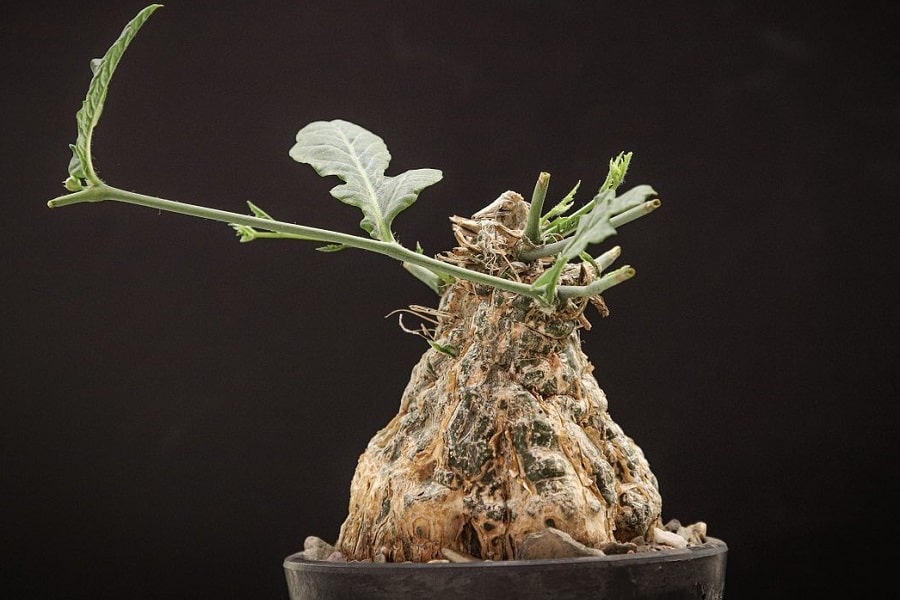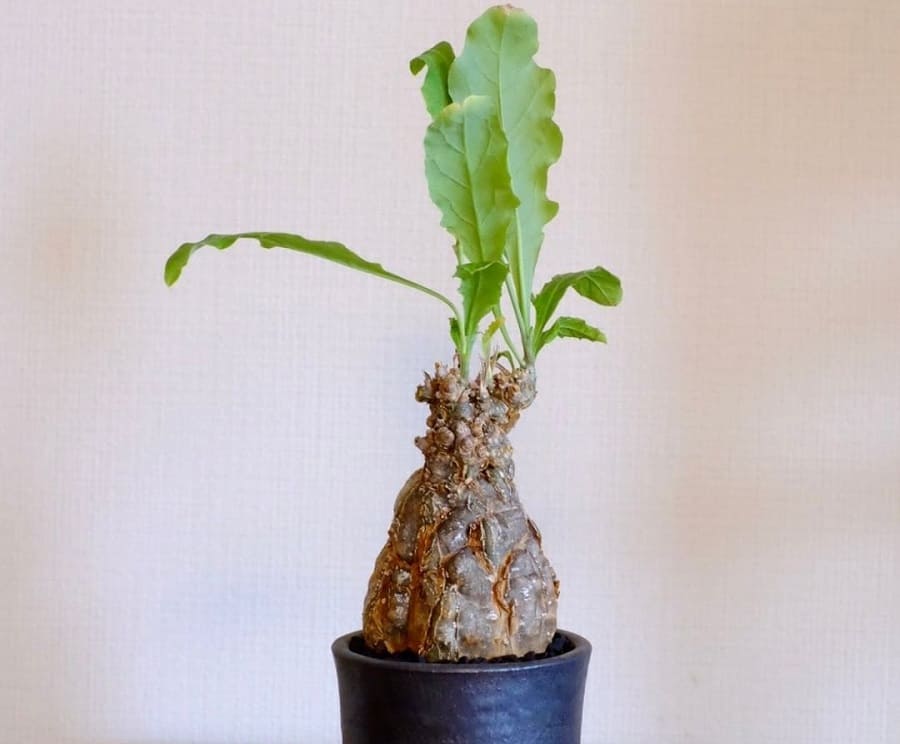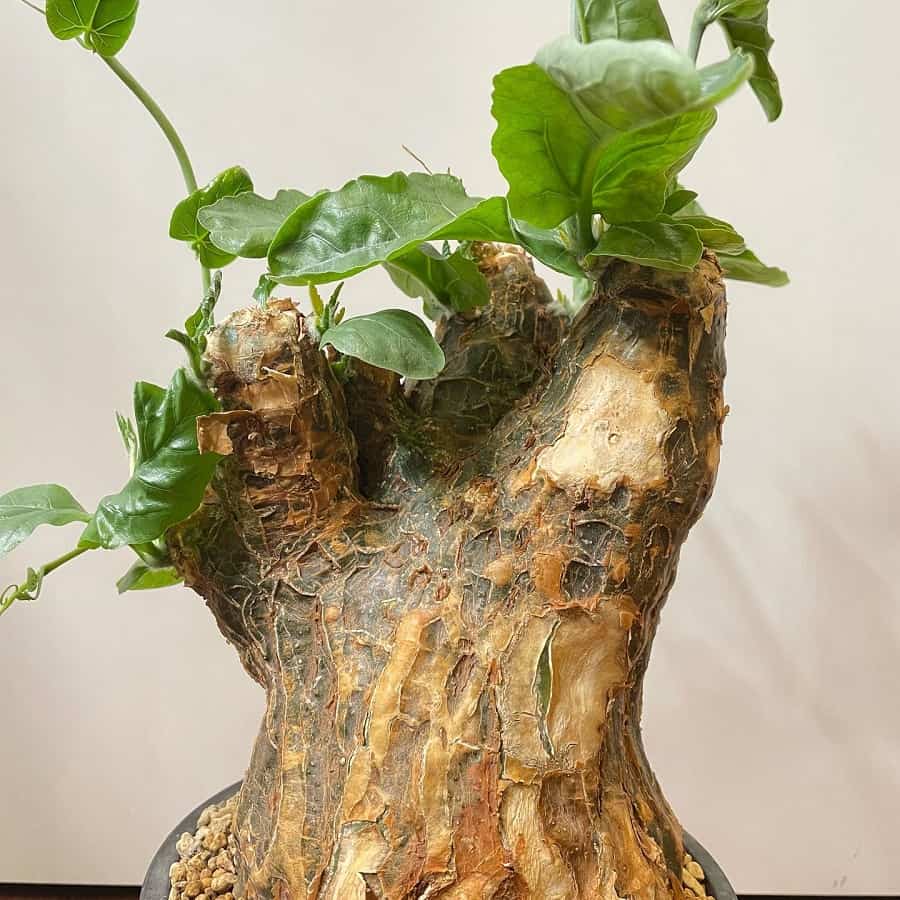Cephalopentandra ecirrhosa: Characteristics and Care
Imagine a plant that looks like a miniature volcano erupting from the ground, with thick “lava” oozing down its sides. That’s exactly what the bizarre Cephalopentandra ecirrhosa resembles as it ages! This peculiar plant from Africa is sure to be a conversation starter in any garden. Keep reading to learn all about cultivating your own volcanic wonder.

Contents
About Cephalopentandra ecirrhosa
Cephalopentandra ecirrhosa is a very unusual perennial, deciduous plant native to parts of eastern Africa. As it matures, it develops an incredibly thick, conical rootstock or caudex up to around 2 feet across. This swollen base resembles a tiny volcano, with rough, melted “lava” textures cascading down from the peak.
In spring and summer, vines sprout from the caudex reaching up to about 3 feet tall. The vines are covered in elongated leaves and produce yellow flowers, followed by inedible orange-red fruits. In fall, the vines die back, leaving just the striking volcanic caudex exposed.
“Ecirrhosa” in the botanical name means “without tendrils,” referring to the plant’s vines lacking the spiraling tendrils common in its cucumber family relatives.
Related Post:
1,000 Types of Succulents With Pictures
How to Care for Cephalopentandra ecirrhosa
Light Requirements
Like many succulents, Cephalopentandra appreciates bright light but not direct, intense sun that can scorch its fleshy stems and leaves. Outdoors, site it in a sunny yet slightly shaded location. Indoors, a sunny, south-facing window is ideal, or supplement with a grow light.
Watering Needs
This plant has typical water needs for a semi-succulent from a desert environment. During its active spring and summer growing period, allow the soil to dry slightly between thorough waterings. Reduce watering in fall as it goes dormant. In winter dormancy, just provide enough moisture to keep the caudex from shriveling.
Soil Preferences
For best results, use a well-draining cactus or succulent soil mix, or amend a standard potting mix with generous amounts of materials like perlite, pumice or coarse sand to enhance drainage. A slightly acidic soil pH is ideal.

Fertilizing
Feed Cephalopentandra ecirrhosa during its main spring/summer growth spurt with a balanced liquid fertilizer diluted to half strength every few weeks. No fertilizer is required during its winter resting phase.
Temperature and Humidity
Native to semi-arid regions, this plant loves warm temperatures around 70-90°F during its active season. It requires mild, dry conditions with low humidity in winter when dormant, with temperatures above 50°F.
Pests and Problems
This plant has no major pest or disease issues when provided with the proper care. Potential concerns include spider mites and rot from excessive moisture during dormancy.

Pruning
Regular pruning is unnecessary beyond trimming any dead or unsightly growth after the vines die back each fall.
Potting and Repotting
Use a container with ample drainage holes and avoid shallow pots that could restrict the development of the substantial caudex. Repot every 2-3 years in early spring before new growth emerges.
Cephalopentandra ecirrhosa Propagation Methods
This unique plant can be propagated from seed or cuttings for an exact clone of the parent plant. Follow these steps:
Seeds:
- Collect ripe orange-red fruits in fall and remove seeds
- Sow seeds shallowly in a well-draining seed-starting mix
- Keep warm and lightly moist until germination in 2-4 weeks
Cuttings:
- In spring, take 4-6 inch vine cuttings with some stem attached
- Allow cuttings to callus over for several days
- Then plant cuttings vertically in a well-draining potting mix
- Keep warm and lightly moist until rooted
With a little patience, you too can cultivate this extraordinary “volcano plant” and its bizarre lava-like caudex! Just provide bright light, excellent drainage, and desert-like conditions for the best results.
